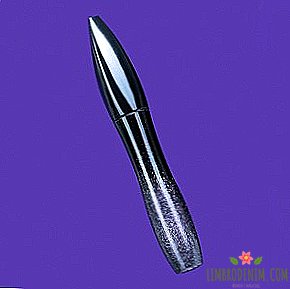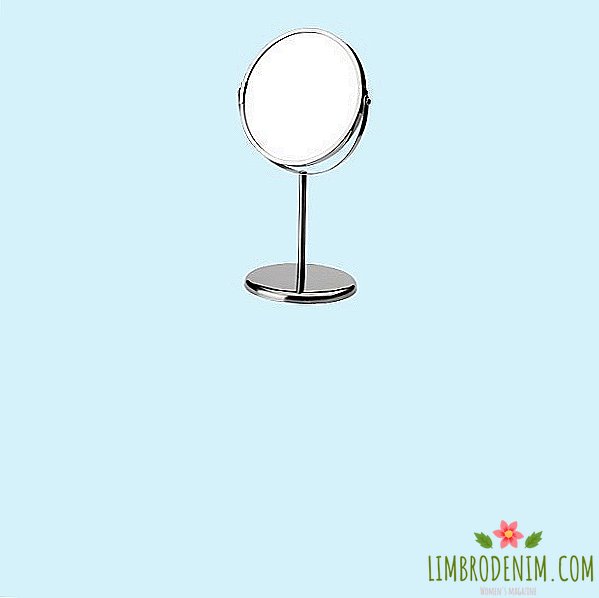Tattoos: How to fill, care and remove if the drawing is tired
Let some of us hide our hands shyly at our grandmothers, so that she did not notice tattoos, in Russia tattoos have long ceased to signal belonging to a subculture (for example, a prison), becoming the usual fashion attribute. We regularly hold tattoo festivals, the popularity of which is added by participants-geeks, and tattooing is still one of the most common cosmetic procedures. Experts told us about tattoos, preparation for their application, the healing process, and also the removal of drawings that ceased to bring joy: culturologist, teacher of culturology at HSE Jan Levchenko, tattoo master at Faux Pas studio Alyona Lipatova and head doctor of L'Art clinic Salome Abalyan.

Why in Russia the attitude to the tattoo is special
According to cultural lecturer Yan Levchenko, people in Russia continue, by inertia, to associate tattoos with the underworld. So, for a cautious employer who considers his fears to be a sign of experience, a man with a tattoo looks ominous. The maximum "permitted" from the point of view of HR is some kind of "romantic nonsense" like cats or horses.
An important factor in this story is the flow of information that penetrated the USSR in the late eighties, when censorship was abolished. Knowledge, from which they had been forcibly protected before, fell upon people, and tattoos fell into the public interest zone along with prison aesthetics, punks, rockers, metallers, and later Goths, rappers, and all the others that came after the collapse of the Union. It was too difficult for older people to distinguish subcultures from each other and to understand their language for the older generation - it is always easier to do with labels and stereotypes. As a result, a single marginal front appeared in the minds of many, threatening the well-being of the average man.
So, owners of tattoos are still forced to make excuses for all this luggage. The paradox is that the subcultures themselves in the era of the smartphone have almost disappeared, and the memory of them and the corresponding prejudices are not there yet, because people are inherently conservative. As the expert notes, the tattoo now means almost nothing - except that a person wants to say something else with his body, to extend it expressively. There is no talk about subculture (with rare exceptions).
How to choose a place and master
Even those who have long been chosen pattern, often do not dare to tattoo for a number of other reasons. In the first place among them is not even financial costs, but security. In reality, the risk of being infected with the hepatitis virus or other infections is no higher with tattooing than with any other interaction with blood and tissues using disposable and sterilized equipment. If you are not sure if a carefully selected studio adheres to hygiene standards, it will not hurt to go on reconnaissance and see how things are generally clean and what happens at the master’s workplace; ask questions, request the necessary certificates and license is also not shameful. As a rule, you should immediately dismiss the option to make a tattoo in a beauty salon and resist the temptation to beat a drawing at home - even if friends are responsible for the quality and safety.
When choosing a master, it is important to take into account not only experience, but also the extent to which his aesthetic attitudes coincide with yours; in order to understand this, one should look through as many works as possible. Check out her or his instagram, read reviews. It is necessary to keep in mind and possession of equipment: if a person is mainly engaged in blackwork and copes well with this, there are no guarantees that working in color can also be done well. You should not completely disown the recommendations of the master, even if you have a clear picture in your head, how everything should look, and you have a detailed sketch on your hands. According to Alena Lipatova, sometimes it can be seen in advance that it will look bad on the skin (for example, very fine details may heal when it heals), and which tattoo will simply get tired with time.
How to prepare for the procedure
Far less obvious is how the body reacts to the introduction of pigment under the skin. Unfortunately, no one is immune from individual intolerance, although, as Lipatova notes, paint allergy is extremely rare. Most often, red pigment, which may contain metals and organic ingredients (for example, carmine), which provoke reactions, should be feared. If you are sensitive to dyes, it would be nice to at least warn your general practitioner about the decision to make a tattoo - or if possible, find out what component can become a trigger. In cases of severe allergies, it is better to completely abandon this idea: if antihistamines do not work, the problem will have to be solved by removing the tattoo.
Special training before applying the tattoo is not required - unless you have to come to grips with the fact that you need to endure the pain. Anesthesia, as a rule, is not done, although it can be included in the process at the request of the client. There is no great need for this, since the sensations are completely portable, but from anesthetic ointment the skin can slightly “tan”, which creates inconvenience for the wizard. In addition, anesthetic should be applied an hour before the session - it makes sense to resort to it if the tattoo is applied where the skin is thinner or the bones are located closer to it (for example, on the knees, elbows or ribs).
On the eve of the session should not drink coffee and alcohol - they can increase bleeding during the procedure. But from the normal meal before the procedure should not be abandoned. Even if the appetite was lost due to excitement, it is better to have a snack so as not to faint. As for body care - on the appointed day, you can use any moisturizer. However, in the place of the tattoo, the effect of them will still disappear: before the procedure, this area must be disinfected and, if necessary, shaved.
How much does it cost and how long does it take
What budget will have to allocate for the love of art, depends on several circumstances. Firstly, the complexity of the pattern, the presence of many small details and different colors in it matters. Secondly, it is necessary to take into account whether a tattoo is required for a tattoo - or the plan assumes something simple and you can fill in the drawing immediately. Of course, the size of the tattoo and the place of application influence the final price. In some areas (for example, at the elbow bends), the skin is strongly stretched, and the process becomes more complicated. If correction is required, the total amount will also be larger. According to Alena Lipatova, the starting price may be about five thousand rubles, and on average a tattoo of the size of a palm will cost ten to fifteen thousand, depending on the complexity of the drawing. It is important to remember that with a famous or fashionable master, the price is likely to be above average.
How much time it will take to spend in the studio determines, again, the complexity of the drawing. A simple minimalist tattoo - a small lettering, asterisk, heart or dot - will require only 10-15 minutes. Most of the drawings can be done in one session, which usually lasts 3-4 hours. And to fill the "sleeves" - the area from the hand to the shoulder joint - with this calculation will take from four to six approaches. You can finish the drawing faster, and there are masters who prefer to work 6-8 hours at a time. However, Alena Lipatova believes that such long sessions are inconvenient for both the client and the master: not everyone can withstand pain and maintain concentration for so long.
How to care for a tattoo
After you have filled the tattoo, you will have to devote the next two or three weeks to careful care of it. On the day of the procedure, it is necessary to still abstain from alcohol, and during the first three days several times a day to treat the vulnerable zone with an antiseptic or special tattoo ointment (in its composition both disinfecting and moisturizing ingredients), be sure to close it with a bandage. When the inflammation and redness pass, it is important not to allow the healing to flow by gravity and to ensure that the skin does not dry out: if there is insufficient moisture, a protective crust will appear on the surface, along with which more pigment may disappear over time. While the regeneration is going on, it’s better to forget about going to the pool and playing sports for a while. During this period, it is necessary to exclude all types of activity associated with high temperatures, avoid the sun and not allow clothing to fit snugly to a fresh tattoo.
You need to be prepared for the fact that even the right care during healing and after will not preserve the original color of the tattoo. Monochrome tattoos gradually become more faded - grayish or bluish, and color lose their brightness. This is a natural process, even the periodic correction here will not play a big role - because the skin does not cease to be updated. According to Lipatov, the correction should be done in those cases if some part of the tattoo has fallen out, that is, it came off with a horny skin layer, or if the tattoo has healed poorly and the picture has spread.
How to get rid of the unloved pattern
If the tattoo is tired, you can remove it in different ways. The most budget and easiest option is to close the new pattern. So it is most convenient to solve the problem when the picture is small and if it does not become convex (this happens when healing is unsuccessful). Otherwise, the volume of the old tattoo will be visible under the new. But if you want to reduce the picture cleaned up, then the most effective and humane way is a laser wave.
So-called Q-switched lasers help to remove tattoos, and recently experts are increasingly turning to picosecond lasers. They have gone far ahead of their predecessors in regard to the removal of complex colors: picosecond lasers “see” more pigments than Q-switched, which allows them to cope with the task more qualitatively. According to recent studies, such models remove up to 75% of the pattern in just one or two procedures. Their other advantage is in the "cold" mode of operation, which is facilitated by a short pulse. This means that the laser wave acts incredibly fast and the tissues do not have time to warm up - that is, the laser will not leave a burn and, as a result, a scar.
How does a tattoo removal laser work?
The tattoo dye is injected deeper into the skin of the epidermis - and the laser beam must penetrate deep enough to get to the pigment and heat it. When heated, the dye begins to break up into pieces, which are then excreted with the lymph. When working with Q-switched lasers, pigment fragments turn out to be quite large, and picosecond lasers crush the dye into smaller particles — they are more easily and more often removed, hence the relatively fast results.
How many procedures are required for the complete removal of the tattoo, you can not say for sure - sometimes it is three to five sessions, and sometimes ten. According to Salomei Abalyan, it all depends on the quality of the dye (professional removal is harder), on the depth of the pigment (after all, depending on the skin and the place of the tattoo, it can also be different) and its density, even on the drawing (feathering goes faster). On a picosecond laser one time will not be enough for the final mixing of the tattoo, but it may be enough to cover it with another illustration.
What are the limitations
Both before and after laser treatment of a tattoo, one should beware of the sun: after laser exposure, the skin may become too sensitive to ultraviolet radiation and hyperpigmentation will develop. You should not sunbathe in advance either: as Salome Abalyan specifies, the laser will not notice the difference between the tattoo pigment and the tan. It is important not to forget about sunscreens, and after the procedure, you can close the treated surface with a special plaster.
To postpone the removal of the tattoo is necessary if you have not finished a course of antibiotics. They can increase the sensitivity to the laser, which again increases the likelihood of a burn. Special care should be taken when people are diagnosed with epilepsy: there are no strict contraindications, but there is a risk that an attack of epilepsy may develop while the laser is running, that is, from bright flashes of light. In this case, it is necessary first of all to obtain the approval of the attending physician.
Ideally, before removing a tattoo, it is worth going through a general medical examination, because the lymphatic system is under additional stress, and it would be good to know that there are no failures in the body. Even if there are no special health problems, no need to try to bring a large or complex tattoo at a time. It is better to even divide it into several parts and gradually treat each zone. Otherwise, there is a risk of intoxication. It is important to remember that, like applying, such a procedure requires considerable financial costs and will not do without physical pain.
Photo: michalz86 - stock.adobe.com





